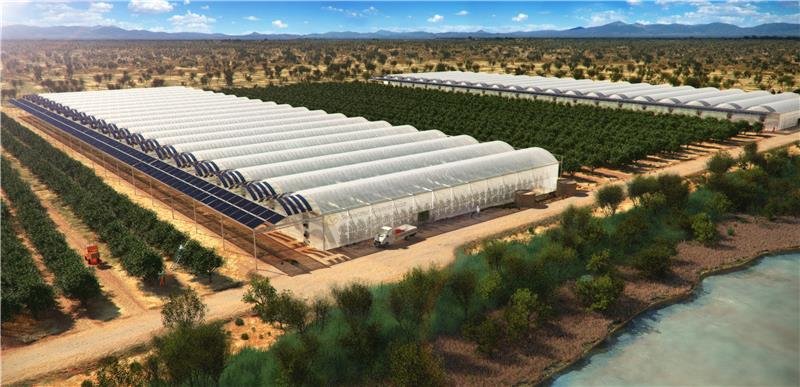Greenhouses on sea water will breathe life into the desert

Possible type of greenhouses
Scientists from the University of Aston in Birmingham (England) work as part of an international team on a unique greenhouse project in which it will be possible to grow plants with the help of sea water. The project will be implemented in the uncomfortable conditions of the Horn of Africa - a peninsula in eastern Africa, which Somalia and Ethiopia share among themselves.
On the Horn of Africa it is very bad with growing plants - the temperature there often exceeds 40 ° C, there is not enough fresh water, as a result of which there is always a shortage of food. For example, in Somalia, only 1.5% of the country's territory is currently cultivated, while farmers take only half a ton of crops per hectare - a thousand times less than in countries with developed agriculture.
')

African horn
Growing plants in a greenhouse is usually a much more profitable and economical enterprise than growing crops in the open field. The authors of the project intend to bring technologies to this part of Africa that will solve the problem of food shortages.
Irrigation water will be supplied to greenhouses from the sea using solar-powered pumps (and this is enough in Africa), and then desalinated with the same energy by evaporation. Evaporating water cools and moisturizes the greenhouse, creating the most favorable atmosphere for plant growth. Condensing fresh water is used for watering and drinking. The remaining salt will go for canning and cooking. In practice, the system imitates the natural circulation of water in nature, when sea water evaporates under the influence of the sun, gathers in clouds and rains on the ground.

Scheme of technology from the company's website
The technology of greenhouses on sea water was invented in the 1990s by the British inventor Charlie Paton. This technology is developed and implemented by the British company Seawater Greenhouses Ltd , which is responsible for the management of this project. The pilot greenhouse was first launched in 1992 on the Canary island of Tenerife, and successfully demonstrated the operation of the technology. The next test project was opened in the United Arab Emirates in 2000, and the third - in the capital of Oman, Muscat.
With the projected growth of the population of the planet, by 2050 it will be necessary to increase the volume of food grown by 60%. And this process requires huge amounts of fresh water — more than any other human activity. Rapidly developing countries are already experiencing a shortage of fresh water , and technologies that allow the use of sea water in the cultivation of food should seriously help humanity.
Source: https://habr.com/ru/post/367705/
All Articles